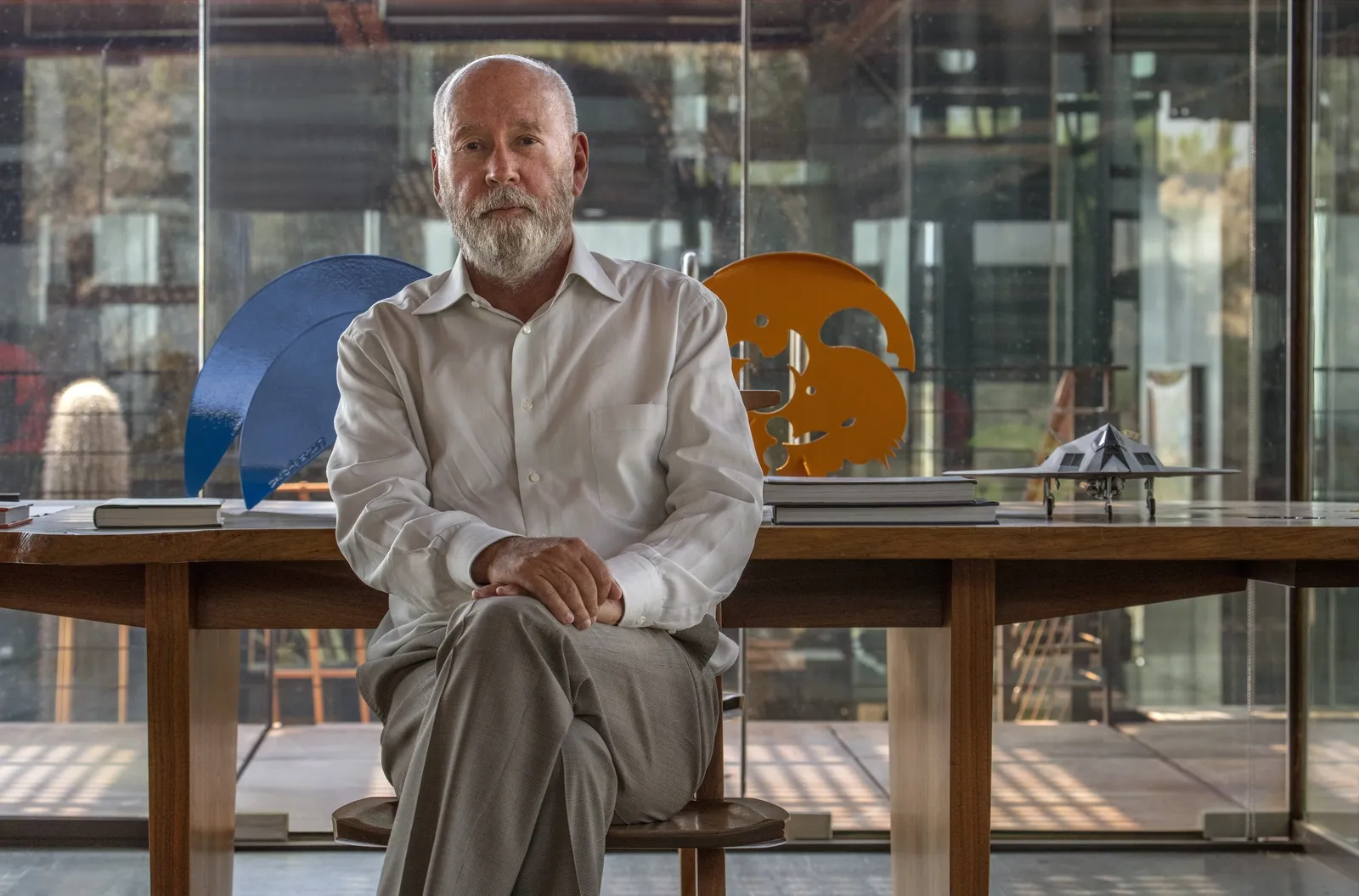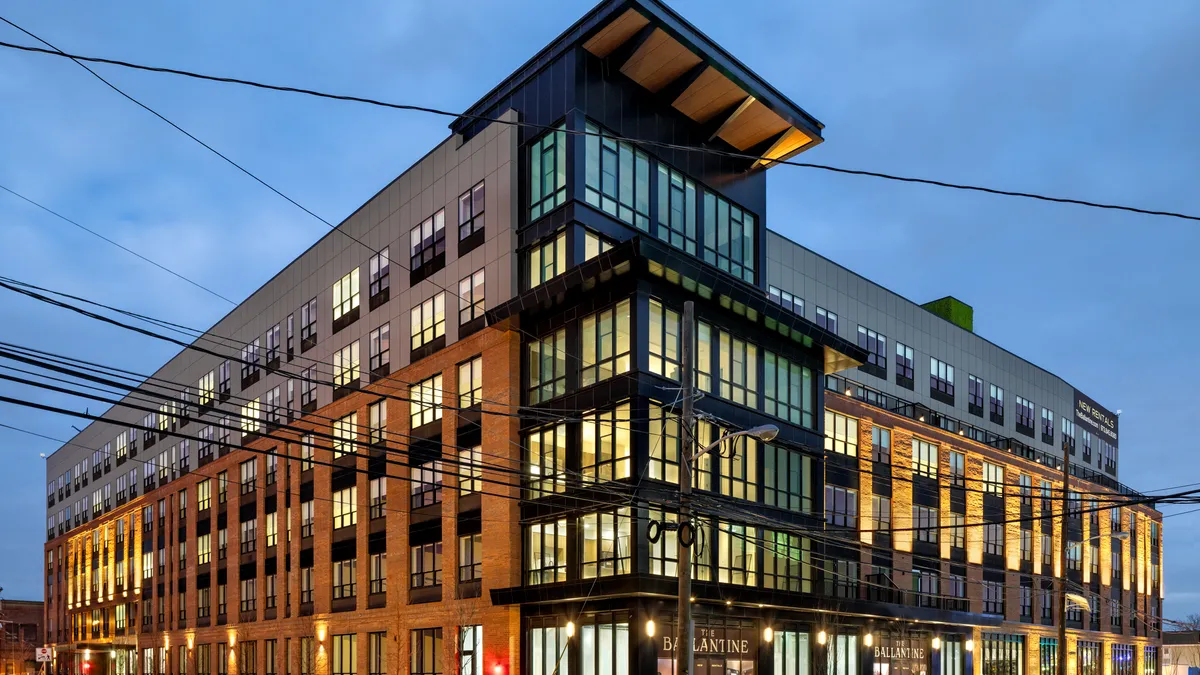Over the last several years, arts and artistry have taken on larger roles in the design and amenity offerings at new multifamily buildings. From on-site galleries to multi-story murals on the sides of buildings, developers are using works of art — often created by local artists — to draw in renters and connect them with the surrounding community.
“Art in multifamily buildings was historically more of an afterthought,” Ann Thompson, executive vice president of architecture and design at Chicago-based developer Related Midwest, told Multifamily Dive. “It’s only in the last 15 years that art programming has evolved into a very deliberate strategy aimed at enhancing the residential experience by elevating the overall design of the property.”
Developers approach this strategy from multiple angles, depending on the needs of the building. This includes commissioning artists to create all-new works, partnering with a gallery to showcase existing pieces, booking resident events centered around local artists and providing spaces for residents to create art, including makerspaces and audio recording booths.

“Over time we’ve seen art curation in communities extend beyond hung paintings, … planters and elaborate sculptures,” Frank Zhou, vice president at Dallas-based developer High Street Residential, told Multifamily Dive. “Today’s art curation commonly involves collaborations with local artists, often telling a story or reflecting on the history of the project, the local community and its people.”
Getting started
When designing an artistic program for the first time, Thompson recommends bringing on an experienced advisor to define objectives and provide options.
“An advisor can identify a diverse mix of emerging and established artists — locally, nationally, internationally or a combination of the three — and ensure you make a sound investment,” Thompson said. “A knowledgeable advisor will also consider subject matter, cost and projected appreciation to select pieces for your collection that will have longevity.”
For The Row Fulton Market, a 300-unit property in Chicago’s West Loop, Related Midwest partnered with New York City-based Hazen Art Advisory to create the building’s program. The property features pieces commissioned or selected specifically to reflect the character of the building and surrounding area.
Contributors to the site include local artist Cody Hudson, as well as Robert Janitz, Pieter Vermeersch, Lorna Robertson and Christy Matson. Thompson notes that the museum-quality artwork on display at The Row Fulton Market is a point of pride for residents, and that many of them like to show the notable works to their guests.
In order to get the most eyes and engagement, Brittany De Paul, vice president of multifamily development at Upland, California-based Lewis Management Corp., recommends placing artwork in high-traffic areas, including common spaces, mail or package rooms, landscaped gardens, courtyards, parks and pools.
Streetscape pieces, including murals or sculptures, can also serve as a marketing tool — and in some cases become local landmarks for the community. “I, for one, choose where I walk at night based on an artful streetscape,” De Paul said. “And I’m not alone. It’s where I bump into neighbors within my building and those surrounding, which grow into friendships.”
Unique executions
The applications of art as an amenity at multifamily buildings can be as varied as the pieces themselves.
Many of the pieces at High Street Residential’s 400H, a 242-unit mixed-use building in Raleigh, North Carolina, opening this month, were selected around a theme of biophilia and connections with nature, according to Josh Dix, principal at High Street Residential. They include a 24-foot wood-framed green wall collage in the lobby, as well as photos and murals of North Carolina’s waterways, mountains and beaches.
High Street also provides its residents with events centered around art. These include art classes, workshops in communal spaces and professional pet photography sessions.
“Residents of apartment buildings can engage with artwork both passively and actively,” Zhou said. “The presence of art can greatly enhance their living experience, foster community interactions or even boost mental well-being.”
In-house creativity
Among the growing number of developers with artwork on display at their properties, Glencoe, Illinois-based developer Optima stands out — because many of its on-site sculptures are made by the firm’s founder and CEO, David J. Hovey.

A sculptor as well as a developer, Hovey has been adding his pieces to Optima’s properties for over 20 years, starting with two 15-foot sculptures at a 750-unit condominium project in Scottsdale, Arizona. “I have always had a keen interest in painting and sculpture and its relationship to architecture,” Hovey told Multifamily Dive. “In order to have the most impact [at the Scottsdale project], I felt I had to do my own sculpture. So that’s where it all started.”
Hovey’s pieces include Kiwi, on display in the courtyard of the 490-unit Optima Signature tower in Chicago, and Curves and Voids, copies of which have been placed in multiple Optima properties.

These sculptures are just one part of Optima’s creative strategy. Over the last five years, the developer has made an effort to include all-original art pieces at its properties, rather than reproductions.
“We started out where the only original artwork was my sculpture, and now every single painting in these buildings is an original painting,” Hovey said. “It has, I think, a significant effect on how the space is used and appreciated.”
Now Hovey can’t imagine opening an Optima building without original art. “It’s been so positively received,” he said, “and people have been so enthusiastic about it, that I think we’ll just do more and more.”



















